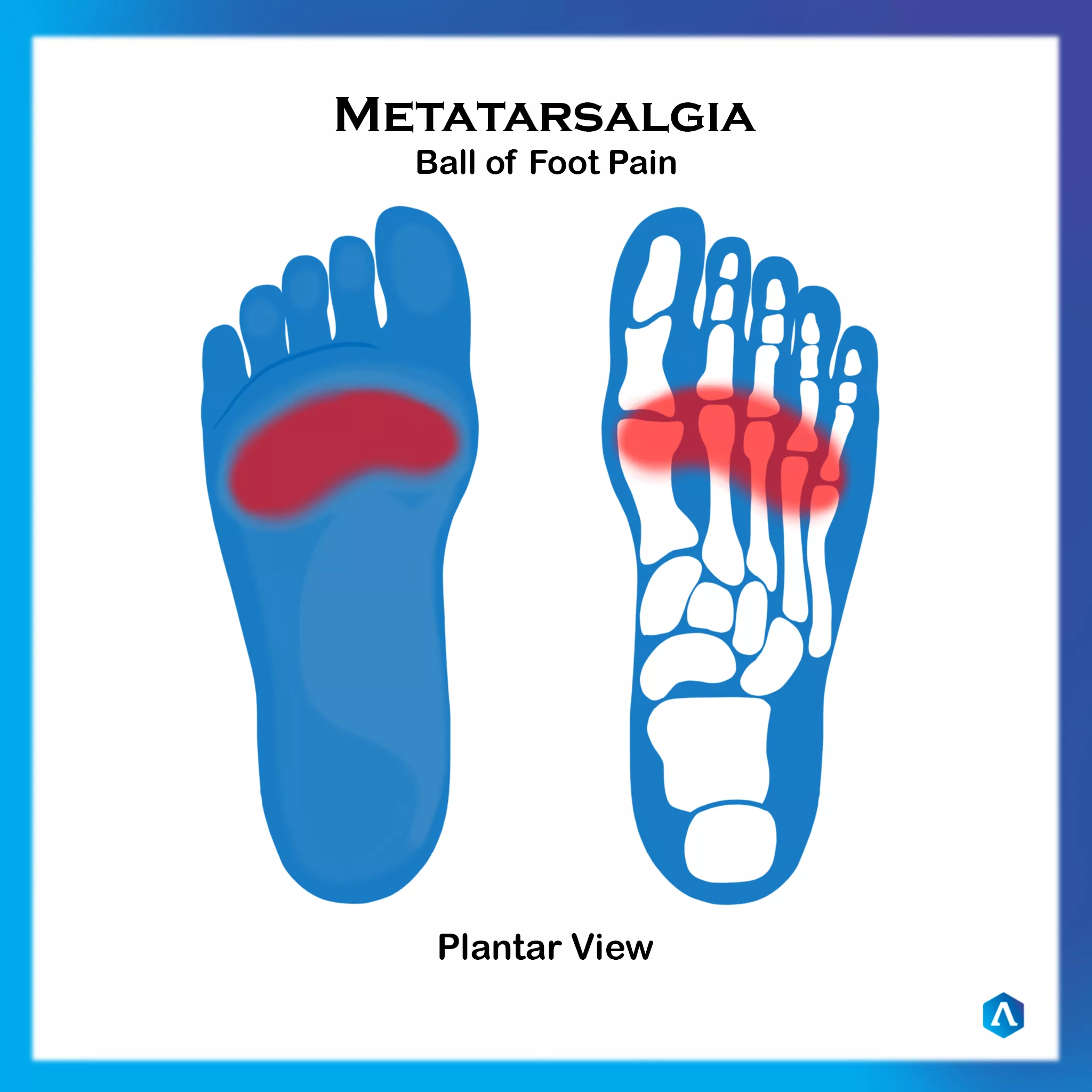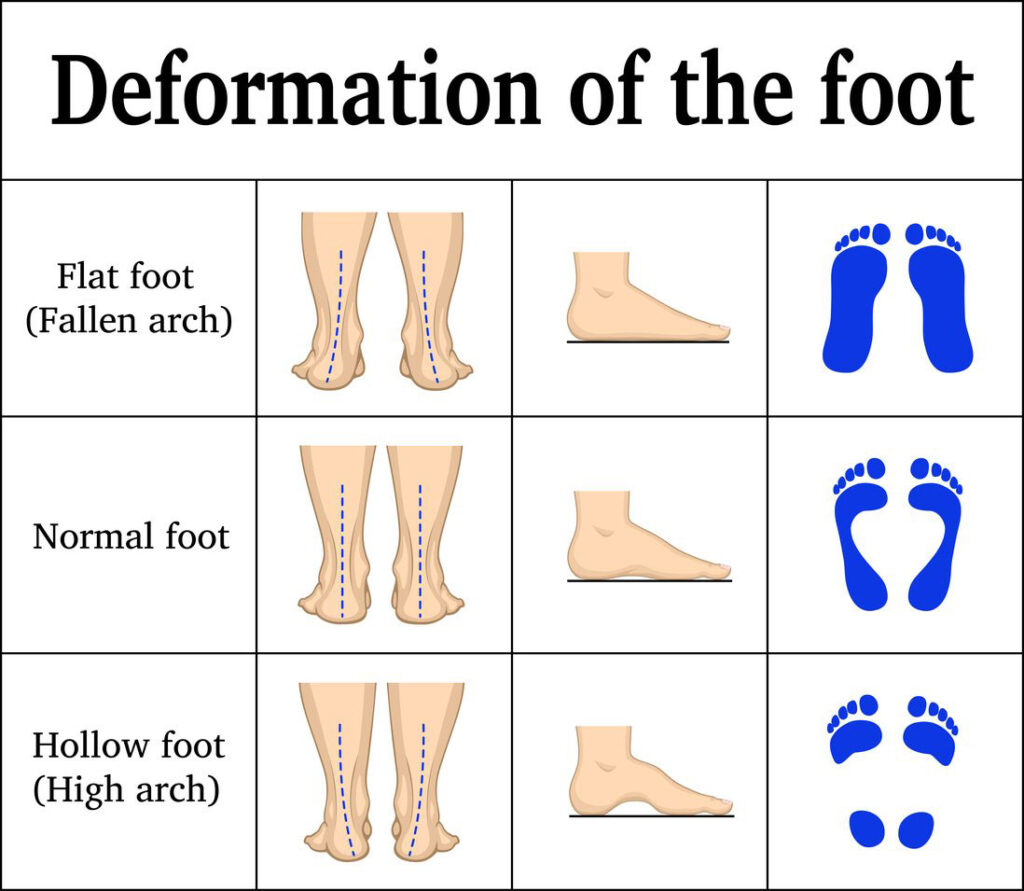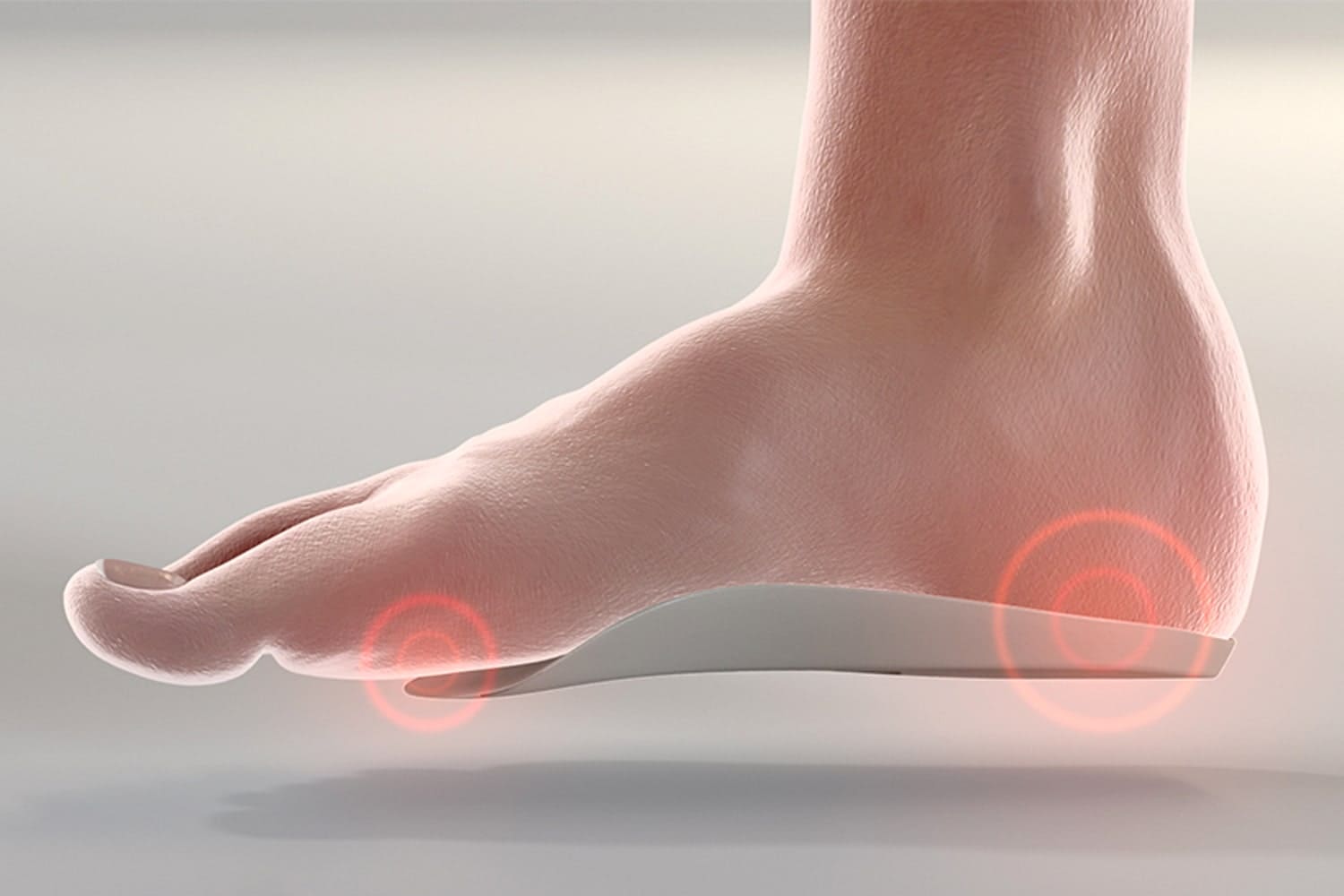Discover the ultimate guide to conquering ball of foot pain with these expert-endorsed orthotic insoles. Dive into our comprehensive review for transformative comfort and unparalleled relief tailored for your feet.

Introduction
Step into relief and comfort with our in-depth exploration of ball of foot pain, a common yet debilitating condition that affects the metatarsal region. Whether you’re dealing with sharp stabs or a chronic burning sensation, understanding the root causes and effective solutions can significantly enhance your daily life and mobility. Our guide offers expert insights into overcoming this discomfort, spotlighting the revolutionary role of orthotic insoles.
Table of Contents
Understanding Pain in the Ball of the Foot
The ball of the foot, situated between the arch and toes, is essential for our movement. Known as the metatarsal region, it supports much of our weight during walking, running, and leaping. Pain in this area can vary from sharp and stabbing to a chronic, burning sensation, significantly affecting daily life and overall well-being.

Root Causes of Pain in the Ball of the Foot
Impact of High Arches on the Ball of the Foot
High arches can cause weight to be distributed unevenly across the foot, leading to increased pressure on both the ball and heel. This imbalance can diminish the effectiveness of the foot’s natural ability to absorb shock, placing added stress on the metatarsals located in the ball of the foot.
Individuals with high arches might also experience supination, where the feet roll outward during motion, intensifying discomfort in the ball of the foot.
A longer second toe, or Morton’s toe, disrupts the foot’s normal biomechanics, affecting how weight is distributed during movement. This toe, bearing more weight than it’s designed to, can escalate stress in the ball of the foot.
Such uneven weight distribution can lead to increased pressure on the metatarsals, causing inflammation, pain, and potentially leading to conditions like Morton’s neuroma or metatarsalgia in the ball of the foot area.
The Effect of a Longer Second Toe
Strategies for Preventing Pain in the Ball of the Foot
Choosing the Right Footwear
Fit and Comfort: Opt for shoes that offer a snug fit without constricting the toes, ensuring there’s ample space to avoid aggravating pain in the ball of the foot.
Arch Support: Shoes with excellent arch support help in evenly distributing foot pressure, crucial for minimizing discomfort.
Heel Height Consideration: Limit heel height to 2 inches or less to reduce undue pressure on the ball of the foot.
Adequate Cushioning: Seek out shoes with sufficient cushioning in the ball of the foot area to mitigate impact and lessen metatarsal stress.
Strengthening and Exercises
Toe Raises: Perform toe raises to fortify the muscles in the ball of the foot, enhancing stability and support.
Ball Rolls: Use a small ball to massage and relax the ball of the foot, promoting circulation and easing tension.
Towel Scrunches: Utilize your toes to gather a towel towards you, strengthening the underfoot muscles.
Achilles Stretch: Execute stretches to elongate the Achilles tendon and the foot’s arch, aiding in flexibility and pain prevention.
Adopting Beneficial Lifestyle Modifications
Weight Management: Keeping a healthy weight can alleviate excess stress on the feet, aiding in pain prevention.
Incorporate Regular Breaks: Regularly rest your feet if your routine involves prolonged periods of standing or walking.
Choose Low-Impact Activities: Prefer low-impact exercises such as swimming or biking over high-impact sports to minimize foot strain.
Utilizing Orthotics and Supportive Inserts
Custom Orthotics: For specific foot conditions like high arches or Morton’s toe, custom orthotics can offer targeted relief and support.
Metatarsal Pads: Inserting metatarsal pads in your shoes can assist in redistributing pressure and protecting the ball of the foot from excessive strain.
Implementing these preventative measures can greatly diminish the likelihood of experiencing ball of foot pain, ensuring the longevity of foot health and mobility. Should pain persist, seeking advice from a healthcare provider is recommended to obtain a tailored approach to care.

Managing Pain in the Ball of the Foot
Adjusting Rest and Activities
- Minimize or halt activities that worsen the pain, focusing on reducing high-impact exercises.
- Engage in low-impact workouts such as swimming or biking to stay active without putting extra pressure on the feet.
Applying Cold Therapy
- Use ice packs wrapped in a cloth on the affected area for 20-minute intervals, multiple times daily, particularly after exerting activities.
- Immediate application of cold therapy post-pain onset or after activities known to induce discomfort can be highly beneficial.
Implementing Heat Therapy
- For ongoing, mild aches without signs of inflammation, apply a warm compress or heating pad to enhance circulation and ease muscle tension.
- Keep heat sessions to 15-20 minutes each.
- Exercises and Stretching for the Feet:
- Massage the foot by rolling a tennis ball or a chilled water bottle underneath it.
- Perform toe flexes and extensions to bolster muscle strength and flexibility.
- Stretch the arch by pressing your toes against a wall, keeping the heel grounded.
Massage Techniques
- Softly knead the ball of the foot to loosen tension and boost circulation. Utilize massage oils or lotions for a smoother experience.
Utilizing Pain Relief Medications
- Over-the-counter NSAIDs, such as ibuprofen, can alleviate inflammation and discomfort. Always adhere to the suggested dosage and consult with a healthcare provider if symptoms continue.
Utilizing Pain Relief Medications
- Choosing Appropriate Footwear and Orthotics:
- Opt for shoes that offer ample toe space and cushioning.
- Consider metatarsal pads or tailor-made orthotics to evenly distribute foot pressure and relieve pain.
Elevating the Feet
- When resting, elevate your feet above heart level, particularly after extended periods of standing or walking, to minimize swelling.
Seeking Professional Assistance
Seeking Professional Assistance
- Should home treatments fail to offer relief, or if discomfort persists, it’s crucial to seek advice from a medical professional for advanced diagnosis and management.
Adhering to these approaches can significantly aid in mitigating ball of foot pain and preventing its recurrence. It’s vital to pay attention to your body’s signals and seek specialized guidance for persistent or severe discomfort.
Embracing Solutions: Orthotic Insoles for Ball of Foot Pain Relief
In the quest to conquer ball of foot pain, orthotic insoles emerge as a beacon of hope, offering not just relief but a pathway to enhanced foot health and comfort. These expert-endorsed solutions are designed with precision to address the unique needs of individuals suffering from metatarsalgia, high arches, and the myriad conditions that lead to discomfort in the metatarsal region.
A Game-Changer for Foot Comfort
Orthotic insoles stand out for their ability to provide targeted support and cushioning where it’s needed most. By redistributing weight evenly across the foot, they alleviate the excessive pressure on the metatarsals, offering a reprieve from the sharp and chronic pains that characterize ball of foot discomfort. The insoles’ design, which often includes a deep heel cup and arch support, works to correct biomechanical imbalances, promoting a healthier gait and reducing the risk of further injury.
Personalized Fit for Maximum Effectiveness
One of the key advantages of orthotic insoles is their adaptability. Available in various sizes and with adjustable features, these insoles can be customized to fit the contours of any foot, ensuring that each individual receives the precise level of support and cushioning required. This personalized approach not only enhances comfort but also maximizes the effectiveness of the insoles in combating foot pain.
Durable Materials for Long-Term Relief
Crafted from high-quality materials, orthotic insoles are built to last. Their durability ensures that individuals can rely on them for sustained relief, making them a worthwhile investment for anyone looking to manage or prevent ball of foot pain. Whether used in daily footwear or specialized shoes for sports and activities, these insoles maintain their supportive properties, providing consistent comfort and protection over time.
Product Recommendations for Ball of Foot Pain
Atlas Arch Support
Best for
People in need of extensive arch support to ease pain in the ball of the foot, especially beneficial for individuals with flat feet or low arches.
Pros
- Focused Relief: Crafted to bolster the arch area, these supports aid in evenly distributing weight and minimizing pressure on the ball of the foot.
- Personalized Fit: Available in multiple sizes with adjustable features for a tailored fit, ensuring optimal comfort and functionality.
- Long-lasting Quality: Constructed from premium materials, Atlas Arch Supports are durable, providing consistent relief through frequent usage.
Cons
- Adaptation Time: Initial use may require a short adaptation period for feet to adjust to the enhanced support level.

User Testimonial
A majority of users have noted a marked decrease in ball of foot pain and an increase in overall foot comfort. Highly recommended by individuals with physically demanding routines and those who spend extensive periods on their feet.
Dr. Scholl’s Metatarsal Pain Relief Pads

Best for
Individuals with mild to moderate metatarsalgia or those seeking additional padding in everyday footwear.
Pros
- Simple Application: These pads are straightforward to use, offering immediate cushioning and pressure alleviation in the metatarsal region. They are versatile for daily wear across various shoe styles.
Cons
- Cons: Might not provide sufficient support for intense pain or significant foot abnormalities.
User Testimonial
The convenience of use and instant cushioning effect are highly valued by users, with many experiencing a significant reduction in metatarsal pressure and discomfort, enhancing daily comfort. Nonetheless, individuals with more advanced metatarsalgia conditions have indicated a need for more comprehensive support solutions.
Superfeet Green Insoles
Best for
Active individuals and those with high arches in search of substantial support and proper alignment.
Pros
- The use of high-density foam ensures enduring comfort and support, complemented by a deep heel cup for enhanced stability.
Cons
- The premium pricing and the potential for being too rigid for those preferring softer cushioning are points of consideration.

User Testimonial
These insoles are lauded by active users and those with high arches for providing strong support and aiding in alignment correction. The high-density foam and deep heel cup stand out as beneficial features. Nonetheless, some users point out the firmness and higher cost as factors to weigh before purchasing.
Powerstep Pinnacle Orthotic Insoles

Best for
Individuals experiencing moderate foot discomfort who require significant arch support, including those suffering from flat feet or plantar fasciitis.
Pros
- Provides a harmonious blend of support and cushioning, featuring robust arch support coupled with a deep heel cradle for stability.
- Constructed for longevity and adaptable across a range of footwear.
Cons
- An initial adjustment phase may be necessary, and their size might not accommodate all shoe styles comfortably.
User Testimonial
These insoles are highly regarded for their effective combination of support and comfort. They are particularly valued by users dealing with flat feet or plantar fasciitis. While a break-in period is sometimes mentioned, the overall feedback highlights their durability and adaptability. The occasional issue of bulkiness in certain footwear is noted.
Sof Sole Women’s High Arch Performance Insoles
Best for
Women with high arches who experience pain in the forefoot and seek both support and cushioning.
Pros
- Tailored to the specific anatomy of women’s feet, offering increased arch support and gel cushioning in the forefoot area.
Cons
- Compatibility issues may arise with narrow or snug-fitting footwear.

User Testimonial
Many women report these insoles as an ideal solution for alleviating pain associated with high arches, particularly praising the targeted arch support and forefoot gel cushioning. However, a common observation is that these insoles might struggle to fit seamlessly into very narrow or tight shoes.
Case Studies & Personal Stories abou Ball of Foot Pain
A 35-year-old avid runner developed sharp pain in the ball of her foot, diagnosed as metatarsalgia. Despite resting and applying ice, the pain persisted, affecting her running routine. After consulting a podiatrist, she was fitted with custom orthotic insoles designed for high-impact activities. These insoles provided the necessary arch support and cushioning, allowing her to return to running without discomfort. This case highlights the effectiveness of orthotic insoles in resolving metatarsalgia for active individuals.
Case Study 1: The Runner with Metatarsalgia
Case Study 2: High Heels and Metatarsalgia
A 29-year-old woman experienced ball of foot pain after regularly wearing high heels at work. The pain became so severe that it hindered her ability to walk comfortably. Upon visiting a foot specialist, she was advised to switch to footwear with lower heels and to use gel-filled metatarsal pads inside her shoes. The combination of sensible footwear and metatarsal pads provided immediate relief, demonstrating the importance of proper shoe selection and the use of supportive insoles.
John, a 42-year-old teacher, spent long hours on his feet, leading to persistent ball of foot pain. Traditional remedies offered little relief, and the pain began to interfere with his daily activities. After researching, John decided to try over-the-counter shoe insoles with metatarsal support. Within weeks of using the insoles, he noticed a significant reduction in pain and improved comfort while standing and walking. John’s story underscores the impact of selecting the right insoles for alleviating ball of foot pain.
Overcoming Ball of Foot Pain with Insoles
Final Thought
Ball of foot pain can significantly impact one’s quality of life, but with the right approach, including the use of supportive shoe insoles, it is manageable. Expert advice, coupled with personal stories and case studies, illustrates the effectiveness of orthotic insoles in addressing this common foot issue. Whether through custom-fit or over-the-counter options, insoles can offer the support and relief needed to overcome metatarsalgia and restore mobility and comfort.
Merchant for Ideal Arch Support Insoles

Frequently Asked Questions
Q: What causes ball of foot pain?
A: Ball of foot pain, or metatarsalgia, is often caused by high arches, a longer second toe, or excessive pressure on the metatarsals due to improper footwear or intense physical activity.
Q: How can orthotic insoles help with ball of foot pain?
A: Orthotic insoles provide targeted support and cushioning, redistributing weight evenly across the foot, offering relief from pressure on the metatarsals, and correcting biomechanical imbalances.
Q: Are there specific exercises that can alleviate ball of foot pain?
A: Yes, exercises like toe raises, ball rolls, towel scrunches, and Achilles stretches can strengthen foot muscles, improve flexibility, and reduce tension in the metatarsal area.
Q: Can lifestyle changes impact ball of foot pain?
A: Absolutely. Weight management, choosing low-impact activities, and incorporating regular breaks to rest the feet can all contribute to reducing the strain on the ball of the foot.
Conclusion
Ball of foot pain doesn’t have to limit your life. With the right approach, including the strategic use of orthotic insoles, you can navigate through discomfort towards a path of enhanced foot health and comfort. Our exploration underscores the importance of understanding the condition, adopting preventive measures, and embracing solutions like orthotic insoles designed for your unique needs. Embrace the journey towards pain-free mobility and reclaim the joy of movement with confidence.











Great article. I’m dealing with some of these issues as well..
Its like you read my mind! You appear to know a lot about this, like you wrote
the e-book in it or something. I believe that you just can do with some p.c.
to drive the message house a little bit, but other than that,
this is wonderful blog. An excellent read. I will definitely be back.
What’s up, every time i used to check webpage posts here early in the morning, for the reason that i love to find out more and more.
I am realloy inspired wjth your writing talents annd apso with the
layout tto yourr weblog. Is tthat this a psid tkpic or did you customize iit your
self? Eituer way eep uup the excellent high quality writing, itt is
uhcommon to loook a nice weblo like this onee nowadays..
Way cool! Some very valid points! I appreciate you penning this post and the rest of
the website is extremely good.
Hi there, its good piece of writing concerning media print,
we all be familiar with media is a wonderful source of
information.